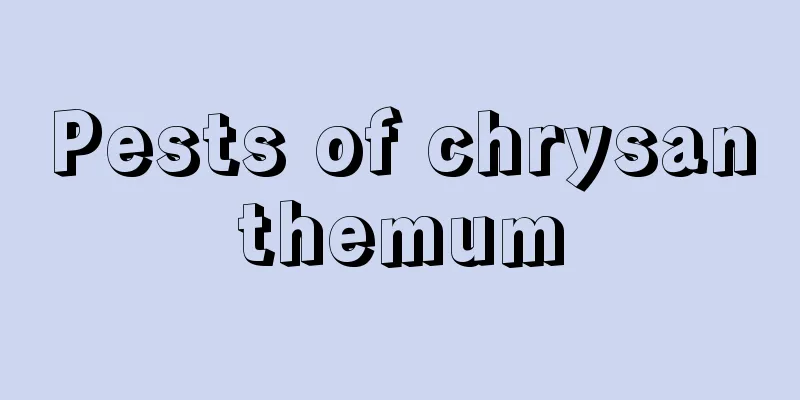Pests of chrysanthemum

Common pests of chrysanthemumsChrysanthemum aphidSymptoms: Aphids are the most serious insect pest that harms chrysanthemums. Aphids may harm chrysanthemums from the seedling stage to the flowering stage. Chrysanthemum aphid is the most widely distributed aphid. It mainly secretes mucus to make the stems and leaves stick together, causing them to curl and harm the young stems and leaves. April to May and September to October each year is the peak breeding period of chrysanthemum aphids. Prevention and control methods: Dig up the topsoil around the roots of the plant, bury 3% furadan granules around it, then cover it with soil and water it. The aphids will die after sucking. After the chrysanthemum seedlings are planted and the scion is grafted, spray them once every 20 days with a mixture of 800 times carbendazim solution and 1000 times 40% omethoate solution. Chrysanthemum spider miteSymptoms: Chrysanthemum spider mites mainly parasitize on the back of leaves, which will harm the leaves and the back of leaves, and will spread from the lower leaves upwards. The mites will move to new leaves and new buds, causing the branches and leaves to turn yellow. When the damage is serious, the leaves of the entire plant will turn yellow, the flowers will become smaller, and the flowering period will be shortened. Prevention and control methods: 1. Do not use branches with mites for cuttings 2. You can spray 0.2% urea on the plants where mites appear. 3. Check regularly and spray pesticides to prevent and control mites if they are found. WhiteflySymptoms: They live in groups on the back of leaves, sucking sap, causing the leaves to turn yellow and fall off. Prevention and control methods: Use omethoate or spray 2000 times diluted 20% plasticizer for prevention and control. HeartwormSymptoms: Damage to chrysanthemum seedlings Prevention and control methods: From late May to early July every year, flower lovers should spray the plants with 1000 times the amount of diazinon or cypermethrin solution every other month to prevent borers from harming chrysanthemum seedlings. The above are the pests of chrysanthemum and their prevention and control methods! I hope flower lovers can find the right medicine for their condition! |
<<: Stem Rot of Lily of the Valley and Its Control
>>: Diseases and Pests of Plum Blossom and Their Control
Recommend
Tall Fescue sowing time and method
Tall fescue has extraordinary trampling resistanc...
How to care for Margaret chrysanthemum
Margarite Chrysanthemum Growing Conditions Margar...
Cultivation methods and precautions of Foxtail Asparagus (Cultivation knowledge of Foxtail Asparagus)
Foxtail Asparagus is a perennial herbaceous everg...
Precautions for repotting Golden Edge Tiger Pilan
Precautions for repotting Golden Edge Tiger Pilan...
Can grapefruit trees be potted?
Can grapefruit trees be potted? The pomelo tree c...
When is the best time to sow red radish?
Suitable time for planting red radish Red radish ...
What are the varieties of hibiscus?
White flower hibiscus The white-flowered double-p...
How to disinfect succulent soil
1. Sun exposure disinfection To disinfect the soi...
How to grow Datura on the balcony and what should you pay attention to
1. Can it be grown on the balcony? Although Datur...
Can the golden branches and jade leaves be exposed to the rain? Are they afraid of the rain?
Jade Plant is a plant that can be grown outdoors ...
How often should you change the water in a fish tank for koi?
Koi is a popular ornamental fish and its maintena...
How to plant the fortune tree to make it flourish? Cultivation management methods and techniques
The money tree is also called the money tree. Man...
What are the breeding methods and precautions for red
Introduction to Red The red lotus, also known as ...
What are the cultivation methods and precautions of ivy
Ivy growth habit Ivy likes a warm and humid growi...
These large green plants with great meanings must have a pot at home
Ficus microcarpa Fiddle-leaf fig is Huahua's ...









